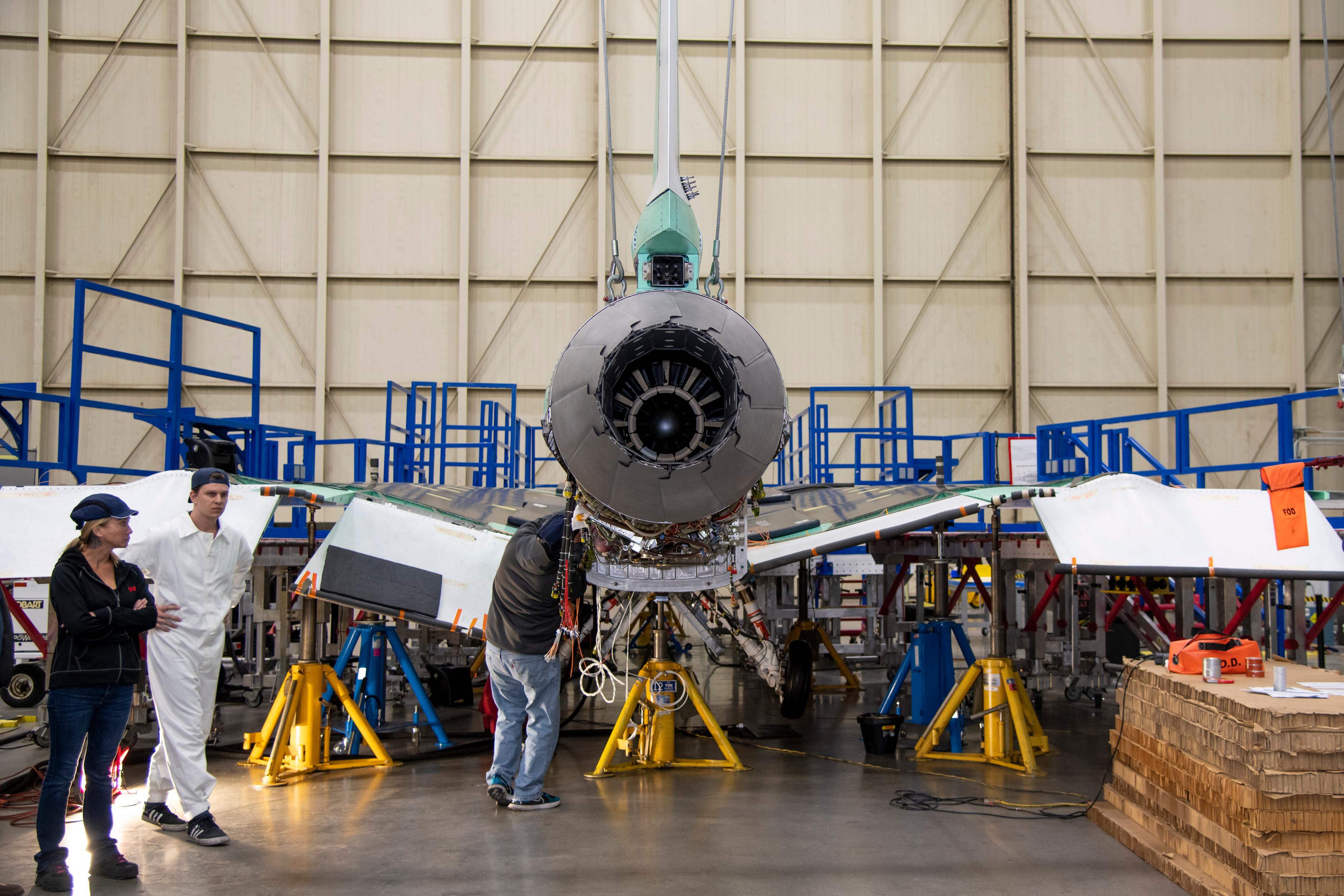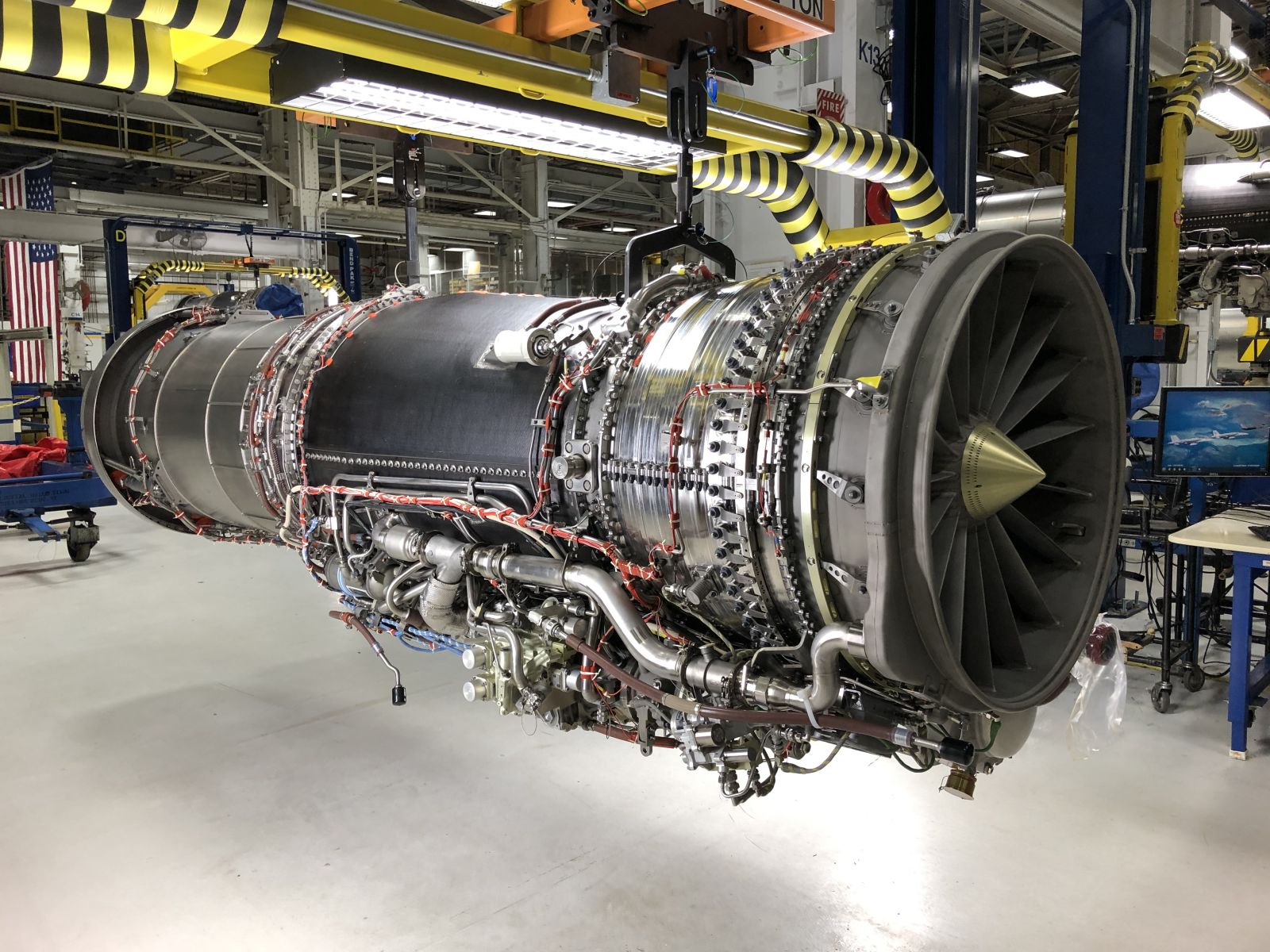


NASA has got the GE Aviation F414-GE-100 engine for its quiet supersonic X-59, that will power it in flight and expectedly prove its worth while delivering the least possible noise by the airframe , without propulsion penalties.
The installation of the F414-GE-100 engine took place at Lockheed Martin’s Skunk Works facility in Palmdale, California, earlier this month, marking a major milestone as the X-59 approaches the completion of its assembly.
A GE Aviation F414-GE-100 engine is being installed in NASA’s quiet supersonic X-59 aircraft , at Lockheed Martin’s Skunk Works facility in Palmdale , California.
The 13-foot-long engine from General Electric Aviation packs 22,000 pounds of propulsion energy and will power the X-59 as it flies at speeds up to Mach 1.4 and altitudes around 55,000 feet.
As preliminary designs for the X-59 were put together several years ago, the initial plan was to power the aircraft with the same jet engines used by NASA’s F/A-18 research jets based at Armstrong.
“We had an inventory of spare engines and parts and thought we could use the engines we already owned, but that didn’t pan out,” Castner said.
The problem was the engine – GE’s model F404 – couldn’t generate enough thrust to achieve the flight performance goals for the X-59. As designed, it took two of the engines to power the F/A-18, but the X-59 only had room for a single engine.

Working with GE, the solution was found in adapting the F404’s next-generation improvement, the F414 engine, into a configuration that would both satisfy the X-59’s power needs and physical size.
On the F414 engine , Ray Castner, NASA’s propulsion performance lead for the X-59 said ,
“The engine installation is the culmination of years of design and planning by the NASA, Lockheed Martin, and General Electric Aviation teams,” “I am both impressed with and proud of this combined team that’s spent the past few months developing the key procedures, which allowed for a smooth installation.”
The X-59 team will follow the aircraft’s assembly with a series of ground tests and ultimately, first flight in 2023.
NASA’s X-59 is the centerpiece of the agency’s Quesst mission. The aircraft is designed to reduce the sound of sonic booms, which occur when an aircraft flies at supersonic speeds, to a quiet sonic “thump.”

This will be demonstrated when NASA flies the X-59 over communities around the U.S. starting in 2025, with the goal of providing the data necessary to open the future to commercial supersonic flight over land , greatly reducing flight times.
Picture Credits : NASA / Carla Thomas
Similar Posts.....
